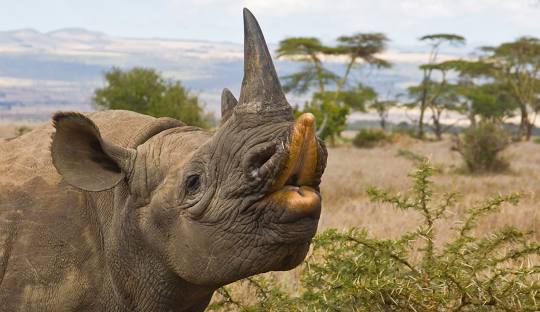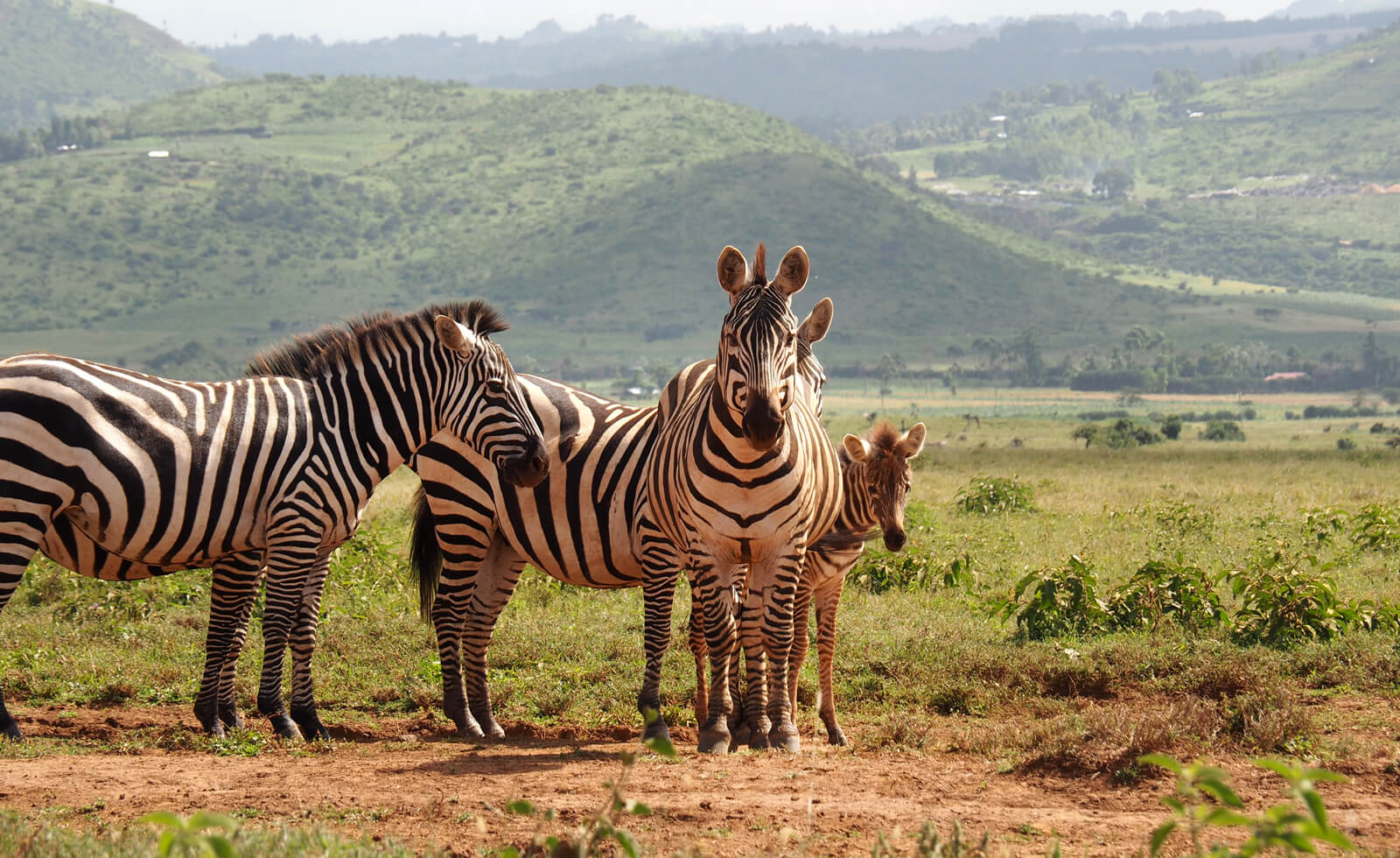Lewa Wildlife Conservancy based in the scrub country near the foot of Mount Kenya is easily one of Africa’s greatest hopes for a wilder future. It was founded in 1995 and covers more than 62,000 acres of savannah grasslands and forests and is important in saving endangered species and supporting sustainable tourism programs. Lewa is not only an example of a wildlife-protected area and all that it encompasses for conservation purposes but also a well-orchestrated shared resource conservation between humans and animals of all sorts. Here is a detailed look at the following conservational achievements of Lewa Wildlife Conservancy.

The Endangered Species
Lewa Wildlife Conservancy has now turned out to be home to some of the most endangered wildlife species in Africa. It is most famous for its intense drive in the conservation of the black rhino which is seriously endangered and the Grevy’s zebra which is also endangered.
- Rhino Conservation:
Lewa currently hosts over 10% of the black rhinos and over 14% of the white rhinos of Kenya. It has one of the most effective Rhino breeding, management, and protection programs currently in Africa. The sanctuary that Lewa is as a secure habitat for the rhinos has escalated their reproduction greatly and thus Lewa has played a very big part in the conservation of critically endangered animals for the country and the world.
- Grevy’s Zebra Protection:
It is the rarest of the zebra types and can be identified by a relatively thin striping pattern and big rounded ears – the Grevy’s zebra. Lewa is one of the few populations in the world where Grevy’s zebra population is known to be relatively large. Other activities pursued by the conservancy are observation, study, and rehabilitation of the habitat in order to promote the survival of these distinct creatures. Local people especially the pastoralist community is involved in carrying out monitoring and awareness of the zebras.

Anti-Poaching and Security Initiatives
Sustained poaching continues to threaten wildlife across the African continent but not in Lewa which has adopted a very effective preventive measure, making it one of the most secure conservancies in the continent. As earlier mentioned, the conservancy uses a complex approach to prevent poaching and protect its animals.
- Highly Trained Rangers:
Lewa has about 150 rangers who have undergone through special training in protecting wildlife, fighting poachers, and other strategies. They are always on alert day as well as night, equipped with modern gadgets like the global positioning system, thermal image cameras, and aerial surveillance in the form of drones.
- Community Policing:
Taking cognizance of the fact that conservation initiatives cannot fold well without cooperation from community people, Lewa has come up with community policing in a bid to comb out poachers. One of the measures is to train and use the residents of the territories as guards and spies so that they will feel personally concerned with the protection of the wildlife.
- Canine Unit:
Lewa has its own canine unit which was created in 2014 as a part of anti-poaching measures. It is made up of tracker dogs that are trained in a way that helps in identifying poachers, prohibited wildlife products, and guns. The dogs and their trainers accompany rangers and security personnel thus improving the conservancy’s capacity for combating poaching.
Community Development and Education
Lewa Wildlife Conservancy appreciates the fact that the conservation of wildlife and its habitats can only be successful if it goes hand in hand with the welfare of the community living near or around wildlife-protected areas. Through collaborations with the communities in which it operates, the conservancy provides education, healthcare, and a viable economy for people who also live with wildlife.
- Education Programs:
Lewa Conservation has created a number of education programs that seek to create awareness of the environment and education of children within the area. Currently, the LESDP program only sponsors more than 20 schools in the Maasai community which assists more than 7000 students every year. It consists of eleven components, which encompass scholarships, the construction of facilities, and professional development for educators so that new generations value the concept of conservation.
- Healthcare Initiatives:
At Lewa, the goal of the healthcare programs is to enhance the health of the people living in the society and increase their uptake of healthcare services. Mobile clinics, maternal health, and HIV/AIDS education are some of the critical health needs that are funded by the conservancy for the surrounding population.
- Sustainable Livelihoods:
Due to the vulnerability of depending on natural resources, Lewa has encouraged and assisted different livelihoods such as; eco-tourism, apiculture, and handcrafting. These initiatives also help local families to have other sources of income so they do not go on hunting more wildlife or developing any other act that can be negative to the wildlife habitats.
Research and Conservation Science
Lewa Wildlife Conservancy is at the center of research and conservation science, and many scientists and researchers flock to the region. Its research activities aim at assessing the behaviors, life histories, and patterns as well as the effects of human interferences on wildlife.
- Wildlife Monitoring and Research:
Lewa carried out baseline surveys based on wildlife inventory with radio collaring, aerial counts, and camera trapping. They include information on animal migrations, home ranges, births, and mortalities which assist in decisions on animal conservation and management.
- Collaborative Research Projects:
Lewa actively works with universities and research institutions as well as with other organizations that focus on nature preservation and protection as well as with independent conservationists seeking new effective approaches and solutions. These have produced massive progress in various areas including but not limited to reproduction techniques of the rhinos, management of diseases affecting the species, and study of the relationship between the species and their predators.
Eco-Tourism and Sustainable Practices
Conservation through tourism at Lewa is a central feature of the Lewa model that sees funding for the programs generated through tourism activities and incentives towards protection of the wildlife. The kind of eco-tourism practiced by the conservancy is one that is sustainable and which has the least effect on the environment but has the maximum benefits to the people.
- Low-Impact Tourism:
Lewa provides different forms of soft tourism, wildlife and nature walks, and cultural tours. Most of its lodges and camps are constructions that harmonize with the ecosystems they are in, and its power supplies, water, and waste management are also regarded as sustainable.
- Community-Based Tourism:
Lewa has engaged the locals in tourism activities through a number of community-based tourism activities come with job and income opportunities for the people. One can interact with native Maasai and Samburu people receive information about the tribe’s life, and purchase souvenirs directly from the talented local craftsmen, which would provide many people of the tribe with incomes, and thus, the advantages of tourism are distributed among many.
Conclusion
Lewa Wildlife Conservancy remains a success story of what would be possible if proper conservation was practiced, communities empowered and the tourism well managed. Supporting people, fighting against poaching, and helping endangered species find shelter, Lewa developed a perfect example of the conservation model that meets human and animal requirements. If you are fascinated by wildlife, you are a conservationist supporter, or you are in search of an extraordinary travel destination, attending Lewa Wildlife Wildlife Conservancy is your opportunity to take part in the conservation of the planet’s wildlife resources.


